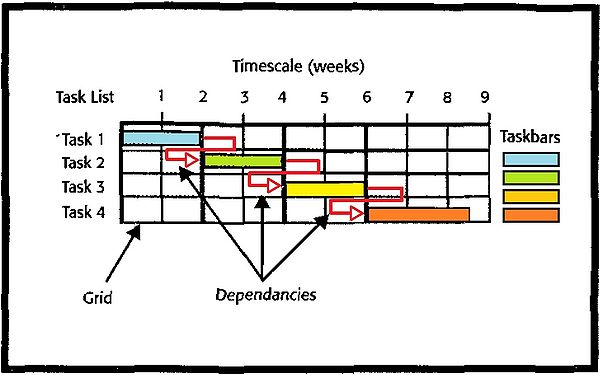Gantt Charts as a Tool for Project Management
Contents |
Abstract
A project is a unique set of processes which consist of different activities and tasks to be performed before reaching the project objectivities.
This article is written in connection with course 42433 Advanced Engineering Project, Program and Portfolio Management at The Technical Univeristy of Denmark in the autumn of 2015.
This article aims at providing information about Gantt Charts and how to apply and benefit from them in project management but also what challenges and limitation the tool poses.
What is a Gantt Chart?
A Gantt chart is a useful tool that shows activities displayed against time. All activities are listed to the left of the chart and a time scale is displayed at the top of the chart. Representing each activity is a horizontal bar indicating the starting date, duration and deadline. The tool is very commonly used in project management because it gives a clear overview of:
- What the different activities within the project are
- When each activity is initiated and when the deadline is
- How long the activity lasts
- Overlap between activities and by how much
- The start and end of the entire project
History of Gantt Charts
The earliest Gantt Chart appeared in the 1890s. It was created by a Polish engineer by the name of Karol Adamiecki who ran a steelwork in the southern Poland. He was interested in different ideas and techniques within management. 15 years later an American engineer, Henry Gantt, came up with his own version of the chart which eventually became widely known and popular and therefore Henry Gantt was the one who laid name to the chart.
Application of Gantt Charts
Gantt charts used to be prepared by hand and therefore the chart needed to be redrawn every time there was a change in the project which posed some limitations to the usefulness of the chart. However the invention of the computer along came project management software which makes the tool much easier to handle and update when changes occur. Today the chart is most commonly used for monitoring project schedules.
Planning, complexity, human behavior
Limitations and challenges
References
- ↑ [www.gantt.com] http://www.gantt.com/

